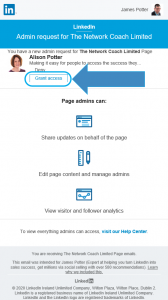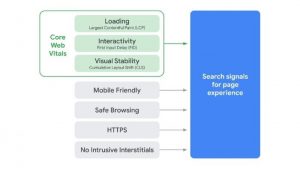A conversational presentation is a non-linear style of presenting in which you can move about in a more fluid way responding to prospect’s interests. It’s a big – and often welcome – change from the old days of a sales person’s orderly and scripted descent through a slide deck.
When done well, giving the customer a greater role in the presentation can create a more engaging, memorable event tailored to their interests. So why do we need to think about managing the conversational presentation? Because often the pendulum swings too far. Giving the customer total control without exerting proper guidance leads to all kinds of problems: The conversation veers off track leaving prospects confused. You jump from topic to topic and never make a strong, cohesive point. You run out of time and don’t accomplish what you set out to, which doesn’t benefit you or your prospect. What’s the answer?
Think like a director
When it comes to putting on a crowd-pleasing production, all responsibility starts and stops with the director. Unlike the actors, the stagehands, or the set designer, the director has to pay attention to the big picture while managing the details that contribute to achieving it. He needs to visualize what he wants the end result to look like and keep a close eye on the details, like casting, staging, and ticket sales, in order to achieve the goal. You must consider how you’re going to manage the following big picture elements when planning a conversational presentation:
Big Picture Thinking:
- Timing. Like a director, you have a set amount of time with your audience. Watching the time and using the clock well is not your prospect’s responsibility, it’s yours. If you run out of time, you may not get another chance. Having some strategies around how you’re going to manage your time is critical to a successful presentation.
- Objectives. A director’s goal goes beyond getting an audience to applaud. He likely needs to sell more tickets or get favorable reviews. In sales, you too need more from your prospect than “Thanks, that was great.” You need to move the sale forward to the next logical step. Otherwise, you’ve just passed on information.
- Storyline. Likely you have a storyline, even if it’s more fluid than a script. It may be important for your customer to see your capabilities in a certain order to fully understand or appreciate the value. You may know that going too deep into one topic too early is likely to introduce a lot of questions or confuse your audience. These are things that only you, the director, knows and must prepare for.
- Other players. While a director has actors with their own lines, you have a number of different players or participants in your presentation, each with their own objectives, motivations and questions. On top of that you may be juggling props, like internet connections, slides, app’s, a tablet, laptop, or product samples.
How do you manage all of these elements while being responsive to your prospect and delivering a strong message?
Preparation for Managing a Conversational Presentation
- Know your audience. Great directors understand what their audience wants and needs well before opening night. Having a discovery call with your customer before your presentation is best method, but there is no excuse to go into a meeting unprepared today. Simply searching the web, social media can tell you much about your prospective audience’s interests, goals and challenges.
- Anticipate topics, subtopics and questions. Once you know something about your prospect you can start to anticipate topics that may be of interest to them. Combined with your experience with similar prospects, this will give you a good framework for where the conversation may go.
- Create a mind-map. In a non-linear conversation it’s very helpful to develop a topic tree or mind map. This is simply a visual representation that helps you define various topics, subtopics and questions – and explore the relationship between them. For example, you may know that if you show them A, they’ll likely want to see B or X. And if they see B or X, they may ask these types of questions.
- Prepare your content. Once you’ve anticipated topics, subtopics and questions, make sure you are able to quickly and easily gain access to that content. Limit the bumbling around searching for sites or slides that often takes place in conversational presentations by having them open and cued up ahead of time.
Think like a director and put some guidelines in place for managing a conversational presentation. Keeping the big picture in mind while managing the details that contribute to achieving it is much easier if you’re properly prepared. Learn more about Conversational Presenting here.
Business & Finance Articles on Business 2 Community(63)






